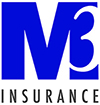
Your business is facing risks that are evolving faster than ever before. Financial risks, technological risks, societal risks, workforce risks – it’s simply not “business as usual,” and it hasn’t been for some time.
With the pace of change accelerating, it’s tough to expect any business leader to have their finger on the pulse of Evolving + Emerging Risks at every moment, and to then understand the strategies that need to be put into place to protect their organization, employees, and customers.
But your M3 team does.
This
report is a reflection of our holistic approach. Our team is passionate about more than negotiating competitive renewals for our clients. We’re dedicated to providing you with the insights and guidance you need to prepare your organization for the risks – and opportunities – ahead. Let’s jump in.
By Lines of Coverage
Rate Trends
2023 was a challenging year for property placements, littered with increased rates, a push for replacement cost valuation adequacy, higher deductibles, tightened terms, further underwriting scrutiny, and markets exiting after continued losses in certain business sectors. Many insurance companies worked to reconcile their balance sheets due to issues with reinsurance capacity, pricing, as well as an increase in large severe event losses. Rate impact was seen widely across industries as property rates increased for the sixth year in a row
1.
Rates are expected to increase in 2024, but there are signs that those rate increases will not be at the same levels presented throughout the end of 2022 and 2023. We anticipate that there will be some variability in the level of property rate increases dependent on carrier relationship, loss experience, inadequately protected risks, coastal or CAT prone areas, and business segments such as frame or joisted masonry habitational, foundries, food manufacturers, and chemical manufacturers.
Evolving + Emerging Risks
A high level of attention is being given to severe convective storms, especially in the Midwest. In 2023, the U.S. experienced 28 separate weather and climate disasters costing at least 1 billion dollars. This represents the highest number of billion-dollar events in a calendar year which included 17 severe weather/hail events across many parts of the country
2.
Insureds should expect to see wind/hail deductibles becoming more prevalent, even in Wisconsin, and insurance companies will be evaluating the concentration of their property values within certain areas.
The hard property market has presented situations where increased deductibles, limitations on coverage terms, and property limits may no longer follow the requirements outlined in leases, loans, or contracts. There have been situations where the requirements outlined in these agreements are no longer commercially available or perhaps cost prohibitive to an insured. Careful review of the property insurance requirements within these documents and approval processes for changes to the coverage terms should be conducted ahead of time to ensure continued compliance.
Underwriting scrutiny and the need for complete submissions will remain prevalent throughout 2024. With the emergence of AI and technology, underwriters are declining less desirable business using algorithms instead of open discussion. Insureds should be prepared to provide additional information surrounding the updates to the building(s), look to close any open loss control recommendations, and provide any documentation pertaining to the maintenance and care of their building to achieve the best results in this market.
By Industry
Construction Rate Trends
There are several positive things occurring nationwide and locally here in the upper Midwest when it comes to insurance rates for contractors. Workers’ compensation rates are down in most class codes in 2024 and have been for the past few years. While contractors emerged from the pandemic, work appears to continue to be plentiful, and the support for infrastructure is trending in a positive direction. The increasing workload is driving higher expected workers’ compensation losses (more payroll = higher expected losses), but contractors have been successfully outperforming expectations and collectively driving workers’ compensation rates downward.
Other coverages are also seeing either flat rates or average minimal increases (less than 10%) including Contractors Equipment, Professional Liability, General Liability, D&O, and Cyber. Umbrella and excess liability lines continue to face upward rate pressure, especially in construction companies that have heavy auto fleets.
Real Estate Rate Trends
While the outlook is clear as mud, one thing is for certain: Insurance companies are getting the rates and terms they desire in a nationwide effort to realize long-term profitability.
For developers and/or property management companies, property insurance premiums have continued to increase due to a variety of factors. Catastrophic weather-related events in the Midwest have hit mutual carriers hard – they have braced themselves for steep reinsurance costs due to rising loss ratios. Some have pulled out of certain areas of the Midwest due to saturation, while some have pulled out of states altogether.
Due to unprofitability, carriers are pushing back on valuations to ensure properties are insured to adequate amounts. That, in combination with a rising rate environment, continues to put stress on property portfolios, especially pre-1985 wood frame. We are encouraging our clients to plan for capital expenditures, especially when their portfolios include aging roofs, outdated electrical panels, and non-sprinklered buildings.
Evolving + Emerging Risks
As our general contractor clients continue to perform work nationwide, we are encouraging them to explore alternative ways to manage risk, specifically with the work of subcontractors they are not as familiar with.
An emerging way to transfer risk is through subcontractor default insurance (SDI), which takes the place of a bond and compensates the general contractor for resulting losses from the subcontractor’s default. If a claim happens, SDI insurance responds quickly and allows the general contractor to have control over the work to aid in timely project completion. In comparison, if a bond claim happens, it can be a drawn-out process when the surety carrier steps in to run the project. To explore SDI options, the general contractor must have volume of work and a thorough prequalification process of subs stepping onto the jobsite.
Read more
here.